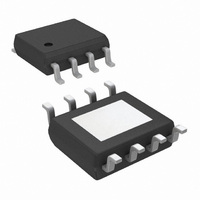LM22680MRX-ADJ/NOPB National Semiconductor, LM22680MRX-ADJ/NOPB Datasheet - Page 11

LM22680MRX-ADJ/NOPB
Manufacturer Part Number
LM22680MRX-ADJ/NOPB
Description
IC REG SW BUCK 2.0A ADJ 8-PSOP
Manufacturer
National Semiconductor
Series
SIMPLE SWITCHER®r
Type
Step-Down (Buck)r
Datasheet
1.LM22680MRE-ADJNOPB.pdf
(16 pages)
Specifications of LM22680MRX-ADJ/NOPB
Internal Switch(s)
Yes
Synchronous Rectifier
No
Number Of Outputs
1
Voltage - Output
Adj to 1.285V
Current - Output
2A
Frequency - Switching
200kHz ~ 1MHz
Voltage - Input
4.5 ~ 42 V
Operating Temperature
-40°C ~ 125°C
Mounting Type
Surface Mount
Package / Case
8-PSOP
For Use With
LM22680EVAL/NOPB - BOARD EVAL FOR LM22680
Lead Free Status / RoHS Status
Lead free / RoHS Compliant
Power - Output
-
Other names
LM22680MRX-ADJ
Available stocks
Company
Part Number
Manufacturer
Quantity
Price
Company:
Part Number:
LM22680MRX-ADJ/NOPB
Manufacturer:
SILICON
Quantity:
201
Part Number:
LM22680MRX-ADJ/NOPB
Manufacturer:
TI/德州仪器
Quantity:
20 000
A maximum value of 10 kΩ is recommended for the sum of
R1 and R2 to keep high output voltage accuracy.
At loads less than 5 mA, the boot capacitor will not hold
enough charge to power the internal high side driver. The
output voltage may droop until the boot capacitor is
recharged. Selecting a total feedback resistance to be below
3 kΩ will provide some minimal load and can keep the output
voltage from collapsing in such low load conditions.
Catch Diode
A Schottky type re-circulating diode is required for all
LM22680 applications. Ultra-fast diodes which are not Schot-
tky diodes are not recommended and may result in damage
to the IC due to reverse recovery current transients. The near
ideal reverse recovery characteristics and low forward volt-
age drop of Schottky diodes are particularly important diode
characteristics for high input voltage and low output voltage
applications common to the LM22680. The reverse recovery
characteristic determines how long the current surge lasts
each cycle when the N-channel MOSFET is turned on. The
reverse recovery characteristics of Schottky diodes mini-
mizes the peak instantaneous power in the switch occurring
during turn-on for each cycle. The resulting switching losses
are significantly reduced when using a Schottky diode. The
reverse breakdown rating should be selected for the maxi-
mum V
a diode with the reverse voltage rating of 1.3 times the max-
imum input voltage.
The forward voltage drop has a significant impact on the con-
version efficiency, especially for applications with a low output
voltage. ‘Rated’ current for diodes varies widely from various
manufacturers. The worst case is to assume a short circuit
load condition. In this case the diode will carry the output cur-
rent almost continuously. For the LM22680 this current can
be as high as 2.8A (typical). Assuming a worst case 1V drop
across the diode, the maximum diode power dissipation can
be as high as 2.8W.
Circuit Board Layout
Board layout is critical for switching power supplies. First, the
ground plane area must be sufficient for thermal dissipation
purposes. Second, appropriate guidelines must be followed
to reduce the effects of switching noise. Switch mode con-
verters are very fast switching devices. In such devices, the
rapid increase of input current combined with the parasitic
trace inductance generates unwanted L di/dt noise spikes.
The magnitude of this noise tends to increase as the output
current increases. This parasitic spike noise may turn into
electromagnetic interference (EMI) and can also cause prob-
lems in device performance. Therefore, care must be taken
in layout to minimize the effect of this switching noise.
IN
, plus some safety margin. A rule of thumb is to select
FIGURE 5. Resistive Feedback Divider
30080723
11
The most important layout rule is to keep the AC current loops
as small as possible.
converter. The top schematic shows a dotted line which rep-
resents the current flow during the FET switch on-state. The
middle schematic shows the current flow during the FET
switch off-state.
The bottom schematic shows the currents referred to as AC
currents. These AC currents are the most critical since current
is changing in very short time periods. The dotted lines of the
bottom schematic are the traces to keep as short as possible.
This will also yield a small loop area reducing the loop induc-
tance. To avoid functional problems due to layout, review the
PCB layout example. Best results are achieved if the place-
ment of the LM22680, the bypass capacitor, the Schottky
diode and the inductor are placed as shown in the example.
It is also recommended to use 2oz copper boards or thicker
to help thermal dissipation and to reduce the parasitic induc-
tances of board traces.
Thermal Considerations
The two highest power dissipating components are the re-
circulating diode and the LM22680 regulator IC. The easiest
method to determine the power dissipation within the
LM22680 is to measure the total conversion losses (Pin –
Pout) then subtract the power losses in the Schottky diode
and output inductor. An approximation for the Schottky diode
loss is:
An approximation for the output inductor power is:
where R is the DC resistance of the inductor and the 1.1 factor
is an approximation for the AC losses. The regulator has an
exposed thermal pad to aid power dissipation. Adding several
vias under the device to the ground plane will greatly reduce
the regulator junction temperature. Selecting a diode with an
exposed pad will aid the power dissipation of the diode. The
most significant variables that affect the power dissipated by
the LM22680 are the output current, input voltage and oper-
ating frequency. The power dissipated while operating near
FIGURE 6. Current Flow in a Buck Application
P = (1 - D) x I
P = I
Figure 6
OUT
2
shows the current flow of a buck
x R x 1.1,
OUT
x V
D
30080724
www.national.com








